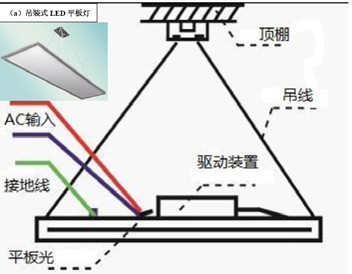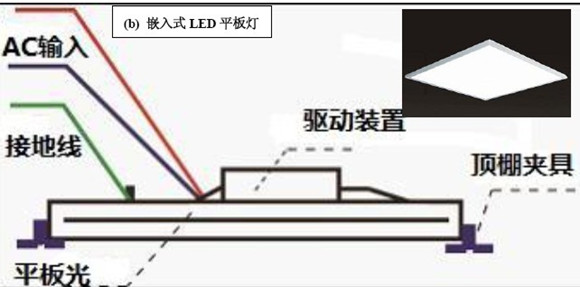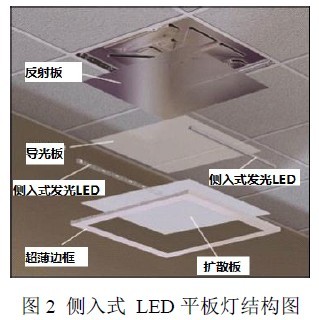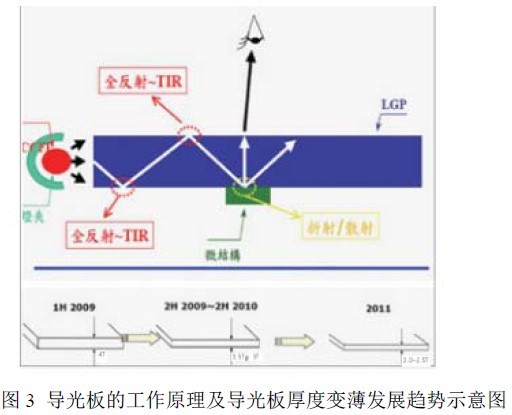At present, the main competitors of LED panel lamps are T5 and T8 grid lamps based on traditional fluorescent light sources, or grid lamps with LED as the light source and office hanging wire lamps. However, the price of LED panel lamps is much higher than that of grid lamps, which is almost close to the suspension lamps, and the market competitiveness has not been fully reflected. According to the statistics of National Semiconductor Lighting Engineering R&D and Industry Alliance, the output of LED flat lamps in China was about 800,000 in 2010. The overall market size is nearly 600 million yuan. The export ratio is lower in all kinds of lamps, about 36.8%. The production enterprises are mainly concentrated in In Shanxi, Guangdong, Shanghai and other regions, the concentration effect of industry is large. The production and application of LED flat lamps is still small, and a relatively consistent product specification form has not yet been formed.
First, the classification of LED panel lights
According to different classification methods, the following categories can be classified as “LEDs†for LED panel lights on the market:
- According to the shape: LED panel lights can be divided into square, rectangular, circular, outer round, etc.;
- according to the size: 300mmx300mm for the purpose of replacing the grille lamp with the size of the grille lamp
300mmx600mm, 300mmx1200mm, 600mmx600mm LED panel lights; 2", 2.5", 3", 4" LED panel lights with alternative downlights;
- According to the installation method: there are mainly two types of lifting type and embedded type, of course, it can also be mounted by ceiling type (surface type) (Fig. 1);



Figure 1 LED panel light with different installation methods. Among them, (a) hoisting LED panel light; (b) embedded LED flat
Panel light; (c) ceiling-mounted LED panel light.
- According to the way of illumination: there are mainly two types of side-in LED flat panel lights and direct-lit LED flat panel lights. Among them, the side-in type LED panel light is mainly composed of a frame bracket, a diffusion plate, a reflector, a light guide plate, a drive, and a light bar (see Fig. 2). At present, the main light guiding materials are PS (Polystyrene) polystyrene, PC (Polycarbonate) polycarbonate, and PMMA (polymethylmetha crylate) (polymethyl methacrylate) acrylic material. The working principle of the light guide plate and the development trend of the thickness of the light guide plate are shown in Figure 3. The structure of the direct-lit LED panel light is similar to that of the side-in type, except that the light source is evenly distributed behind the diffuser. Of course, there are other classifications. For example, some manufacturers separately perform LED panel lights according to the brightness and dimming function.


Second, the advantages and disadvantages of LED panel lights
The direct-type flat panel lamp has the following advantages over the side-emitting panel lamp: First, the energy efficiency is high. The light from the LED is directly illuminated by the diffuser, which improves the system energy efficiency of the luminaire. According to reports, there are currently more than 80lm / W products. Second, the cost is lower. The cost of the light guide plate is saved, the cost of the lamp is reduced, the internal space is large, and the design is more flexible. Third, the quality of the luminaire is reduced because the light guide plate is omitted. Fourth, reliability has increased. We know that in the design of the luminaire, the performance of each component and the materials used will determine the performance of the luminaire, the components will increase, and the reliability will be reduced. Therefore, if a diffuser with better quality is used, the lamp can ensure a long life, and the light guide plate and the reflective film are aging and yellowing at a high temperature, which affects light output efficiency and service life.
The main disadvantage of the direct-type flat panel lamp is that it cannot be made too thin. There must be a certain distance between the LED light source and the diffuser plate. Otherwise, the luminaire will produce bright spots, which will inevitably lead to an increase in the thickness of the luminaire, which will increase the cost of the luminaire casing, and the appearance of the luminaire will also appear poor, and the thickness will increase. The light transmission path is increased, and the energy efficiency of the lamp is reduced. Since the lamp bead is fixed on the back plate, if the back plate is made of a whole piece of aluminum substrate, the cost will be high, and if a strip-shaped aluminum substrate is used, fixing and positioning are another problem. If the back panel of the direct-type flat lamp uses a large-surface aluminum plate, it is also necessary to consider the problem of deformation and bending of the back plate after long-term lifting.

The shortcomings of the side panel lamps are mainly: First, the energy efficiency is not easy to do. Table 1 gives a comparison of the performance of a side-in LED downlight with the same power and a conventional LED downlight. It can be seen from the analysis that the side-in LED panel lamp of the same power still has a small gap compared with the traditional LED downlight in terms of light output, energy efficiency and color rendering index (CRI). Second, the cost price is higher. The light guide plate is the core of the side-in type flat lamp; the price is higher than the direct type due to the addition of the light guide plate; thirdly, the quality of the light guide plate is high. If the design is not good, the middle light will appear, and the two sides are dark, or Light edges have bright edges, or different angles of brightness are inconsistent, which affects the quality of lighting. Fourth, the reliability can be relatively poor. Since the light guide plate, the reflective ink and the reflective film in the side-emitting panel lamp are always at a relatively high temperature, it is easy to age and turn yellow, resulting in a decrease in the light extraction rate, and the life of the lamp is greatly reduced.